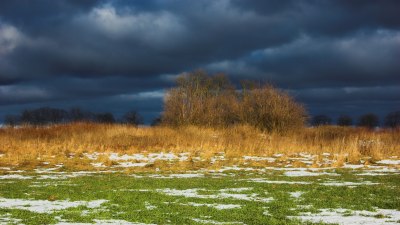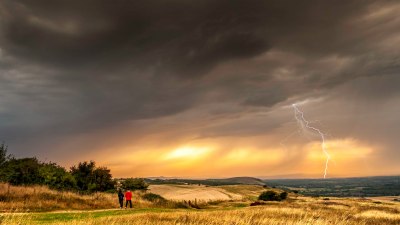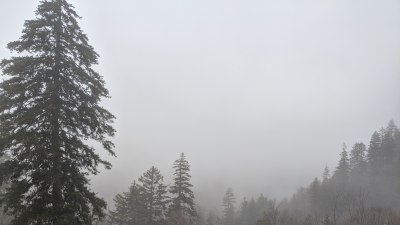What Causes the Unpredictable Weather Patterns Before Summer Hits
Explore the factors behind unpredictable weather patterns before summer, including climate change and atmospheric shifts.

Image by bedneyimages on Freepik
As the earth transitions into the warm embrace of summer, many regions experience unpredictable weather patterns that often leave meteorologists scratching their heads. This phenomenon is not merely a result of chance but a complex interplay of various atmospheric factors, climate variability, and geographical influences. In this article, we delve into the key causes of these erratic weather patterns, shedding light on the mechanisms that drive them.
1. Climate Change and Its Impact
One of the most significant contributors to unpredictable weather patterns is climate change. The Earth's temperature has been steadily rising due to human activities, primarily the burning of fossil fuels, deforestation, and industrial processes that release greenhouse gases into the atmosphere. These gases trap heat and disrupt the natural balance of weather systems, leading to extreme fluctuations in temperature and precipitation.
As the planet warms, regions that once experienced predictable seasonal weather now face unprecedented shifts. For example, areas that typically enjoy mild springs may suddenly face unseasonably warm or cold temperatures, leading to unpredictable weather conditions as summer approaches. The interaction between warm and cold air masses becomes more dynamic, contributing to a rise in severe weather events.
2. Atmospheric Rivers
Another critical factor contributing to unpredictable weather patterns is the phenomenon known as atmospheric rivers. These are narrow corridors of concentrated moisture in the atmosphere that can transport vast amounts of water vapor over long distances. When these atmospheric rivers encounter mountainous terrain or other geographical features, they can lead to heavy rainfall, flash floods, or sudden shifts in temperature.
Before summer begins, the interaction of these moisture-laden systems with warming temperatures can result in unexpected storms or prolonged dry spells in certain areas. This phenomenon is particularly evident in regions such as the western United States, where atmospheric rivers frequently impact weather patterns.
3. The Influence of El Niño and La Niña
The El Niño-Southern Oscillation (ENSO) is another critical driver of weather variability globally. El Niño and La Niña are opposite phases of this climatic phenomenon that alters sea surface temperatures in the Pacific Ocean and influences weather patterns worldwide. During an El Niño event, warmer ocean temperatures can lead to increased rainfall in some regions and droughts in others, while La Niña typically results in cooler ocean temperatures with the opposite effects.
As these cycles progress, their influence can create unpredictable weather patterns in the months leading up to summer. For example, if an El Niño event occurs in the spring, it could lead to warmer and wetter conditions in previously dry regions, resulting in a dramatic change in weather behavior before summer.
4. Changes in Jet Streams
The jet stream is a fast-flowing river of air high in the atmosphere that helps to determine weather patterns. Shifts in the position and strength of the jet stream can lead to dramatic changes in weather conditions. Elements such as the warming Arctic and changes in land temperatures can influence the jet stream, resulting in increased volatility.
In the pre-summer months, a weakened or meandering jet stream can cause cold air to plunge into warmer regions, leading to unseasonably cool weather or severe storms. Conversely, sections of the jet stream might bring hot air from the south, resulting in sudden heatwaves. The unpredictable nature of jet streams adds another layer of complexity to forecasting weather in the days leading to summer.
5. Localized Effects and Microclimates
It’s essential to consider that weather patterns can also be influenced by localized effects and microclimates. Geographical features such as mountains, bodies of water, and urban areas can create specific weather conditions that differ significantly from surrounding regions. For instance, cities often experience the urban heat island effect, where temperatures are higher than in rural areas due to human activity and infrastructure.
As summer approaches, these localized weather conditions can lead to unexpected changes. A region that typically anticipates mild weather may suddenly face scorching heat waves due to urbanization or topography blocking typical airflows. Understanding these localized effects can provide additional insights into the unpredictable nature of weather patterns.
6. Role of Seasonal Cycles
Seasonal cycles themselves also play a vital role in weather variability. The transition from spring to summer brings significant shifts in solar radiation, which can affect air temperature and pressure systems. Seasonal changes impact the development of thunderstorms, particularly as warm air masses rise rapidly in the atmosphere.
For instance, the increase in solar radiation during late spring can result in increased humidity levels, leading to intense thunderstorms. These storms may cause unexpected rainfall or even tornadoes in areas that typically do not experience such severe weather elements. The ability of meteorologists to predict these changes is often challenged by the rapid evolution of weather systems during this period.
7. Human Interaction and Urbanization
Human activities have increasingly influenced weather patterns, particularly in urban areas. The construction of buildings, roads, and other infrastructure can modify local climates, leading to increased instability. Urban areas often trap heat, create localized wind patterns, and affect humidity levels, resulting in unique weather conditions compared to rural settings.
As populations grow and urban sprawl continues, these factors can contribute to unpredictable weather patterns in cities, especially as summer approaches. The interaction between natural weather systems and urban environments often leads to extreme weather events, such as intensified thunderstorms and heatwaves.
8. Interplay of Temperature and Humidity
The interplay between temperature and humidity is crucial in determining weather patterns as summer nears. As temperatures climb, the atmosphere can hold more moisture, leading to a higher likelihood of thunderstorms and heavy downpours. This increased humidity can also contribute to the unpredictability of weather outcomes as storms develop quickly and violently.
When warm, moist air rises and cools, it can lead to the rapid formation of cumulus clouds, resulting in precipitation. In regions where this moisture buildup occurs, forecasters may find it challenging to predict whether rain or clear skies will prevail, highlighting the inherent unpredictability of pre-summer weather.
In summary, the unpredictable weather patterns experienced leading up to summer can be attributed to a multitude of interconnected factors. From climate change and atmospheric rivers to oscillation phenomena like El Niño and localized microclimates, many elements play a role in determining weather outcomes. Understanding these dynamics is essential for improving weather predictions and preparing for the variety of conditions that may arise.
As we continue to navigate the complexities of our changing climate, monitoring these factors will be crucial in forecasting what lies ahead. With ongoing research and advancements in meteorological technology, we can further comprehend the nuances behind these unpredictable weather patterns and better equip ourselves to handle whatever nature sends our way as summer approaches.











